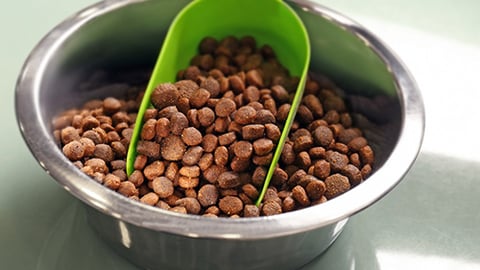Gaining Share With the Well-Groomed Pet
"I love Russell, but I don’t love his hair,” says Brittany Larrabee. The 36-year-old customer service agent from Atlanta is talking about her 10-year-old long-haired cat. “He was a kitten when I got him, and just this cute little ball of fluff,” Larrabee adds. “Little did I know that fluff was going to mean grooming, grooming and more grooming!”
Key Takeaways
- Along with food and health, grooming is one of the major categories of pet care, expected to hit nearly $5.5 million by 2025.
- Grocers should consider carrying specialty pet-grooming items, since they can bring more variety to the shelf and also often have better margins than basic products.
- When merchandising pet-grooming products, grocers should make sure that shoppers know they’re available, display items outside the pet department, experiment with different ways to group products, and hold in-store events in partnership with manufacturers.
From brushes and trimmers to flea and tick shampoo and ribbons, pet grooming is big business. Along with food and health, grooming is one of the major categories of pet care. According to a report from Rockville, Md.-based MarketResearch.com, the pet-grooming products market was valued at almost $4 million in 2017. By the year 2025, it’s expected to hit nearly $5.5 million.
Driving these trends is the increased humanization of pets, as well as the parallel trend of humans becoming more invested in personal beauty care routines. “Having him groomed is pretty expensive. I also use a few products at home between sessions,” says Larrabee. “Sometimes I think it’s too much. But then I look at my own vanity full of beauty products, and I see how happy he acts when he’s got a new ‘do. And I know that it’s worth it.”
“For retail grocers, the target consumer will be one they already know,” notes Mike Franco, a professional merchandiser and retail consultant who has worked with grocery brands big and small, including Food Lion and Farm Fresh. “It’s not very likely that a completely new consumer will visit these locations just for their pet’s grooming needs. On the other hand, the ones that are already familiar with your location are a good target. The idea is if they are already shopping you for their food essentials, and they are already buying grooming essentials, they’ll shop you for the grooming products because you’re adding a convenience for them.”
“Our customers are repeat customers. Think about it: Once you find a grocery store you like, you tend to go back over and over again,” explains John Riggs, a manager at Joe’s Grocery, an independent grocer that has had a presence in Austin, Texas, since 1988, and has expanded its pet offerings.
Specialty Grooming Category
Within the pet-grooming category, there’s the subcategory of specialty products. While most retail grocers carry at least one type of shampoo or brush, they should also consider specialty items for their shelves, since these products can bring more variety to the shelf and also often have better margins than basic products.
“Let’s say you stock a basic all-purpose dog shampoo with a small profit margin,” explains Franco. “Sure, you can sell a decent amount of it to make a decent profit. But you could also carry specialty shampoo with a higher margin, and you don’t need to sell as much to make the same profit. In the end, it might make the most sense to stock both so that you cover both consumer needs and have a healthy mix of profit.”
Specialty pet grooming products come in many different forms, with each product promising specialized results. For example, both Target and Walmart carry Veterinary Formula Clinical Care Hot Spot & Itch Relief Pet Shampoo, which aims to soothe pets with skin issues. It solves a problem and offers a specific result.
Specialty products are also determined by how they’re made or the ingredients they use. Many consumers place a high value on organic or hypoallergenic ingredients. Innovet’s PurEyes is carried by Austin-based Whole Foods Market and touts an antibiotic- and sulfate-free formula to handle tear stain removal.
The specialty category can also include items that don’t fit into the general category because of their unconventional use in the pet market. For instance, products like dog deodorants, sunscreen and colognes all fall under the specialty category. Stores like San Antonio-based H-E-B carry Four Paws Cologne Red, a spicy scented spray designed to help dog owners keep their pets smelling cleaner longer.
Merchandising and Marketing
Supermarkets and big-box stores are some of the main distribution points for pet-grooming products, but that doesn’t mean there’s no competition out there. Specialty pet stores are also main distribution points.
“The uphill battle is that consumers expect those pet stores to have these types of products, but that’s not always the case with grocers,” notes Franco. “So, I’d say the first order of business is to make sure that the consumer knows he can get these products where he shops every day anyway.”
Also, think outside of the pet aisle to grab potential customers’ attention. “If the consumer doesn’t expect you to carry a product, they might not even wander down the pet aisle to notice that you do carry it,” suggests Franco. “When you’re stocking new products, consider giving them display space outside of your pet department — Near the door or your customer service desk might get more eyeballs.”
Inside the pet aisle, experiment with different ways to group products. Displaying by manufacturer is effective when a brand name carries a lot of weight. On the other hand, organizing by use can also be successful. “The key is not to lock yourself into one method of display,” warns Franco. “Test out what works, and be flexible about making changes based on the data.”
In-store events are a smart way to compete with specialty pet stores. Product demonstrations and free samples can bring in more foot traffic at a store location. Consider partnering with local professional groomers, too. They can provide product demonstrations and tips during in-store events. That may sound counterintuitive, but remember that the target audience for at-home grooming products and professional grooming services can intersect.
One option would be a weekly store drawing where a customer’s dog gets a makeover. The groomer uses grooming products found in the store to perform the makeover. Then, for the rest of the month, the store displays before-and-after photos on-site, along with the products used to achieve the look.
Just by having the contest, you let your current customer base know that you’re carrying more specialized grooming products. The signups yield valuable name and email data. You could even add a field on the form where they tell you what their biggest grooming concern is, which you could then use to inform which products you’re stocking. Just be sure you’re following all applicable laws about the collection of that information and the use of it.








